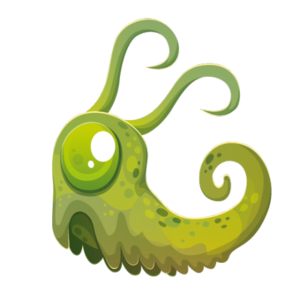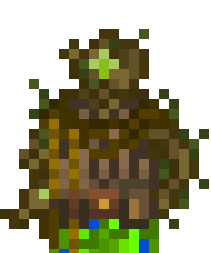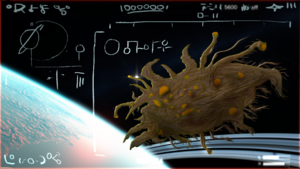Dionae Forms
▶ This wiki page is currently behind the Phoron Scarcity update ◀
Information concerning phoron or the phoron scarcity may be outdated, lacking or unsatisfactory. Questions related to the phoron rework can be raised on Lore Discord.
| Dionae Lore Pages | ||
|---|---|---|
| Species | Dionae · Dionae Forms · Dionae Mindtypes · Dionae Biology · Dionae Out-Of-Character | |
| Locations, Planets & Systems | Xrim · Hieroaetheria · Rueltab · Primitive Sirens of Mictlan · Eternal Gardens | |
| Conglomerates & Factions | Liberty's Cluster · Dionae in the Federation · Dionae in the Hegemony · Vaurcae & Dionae · The Narrows · The Underhive Collective · Pactolus Exploration League · The Voidtamer Confluence | |
| Culture, History & Society | Dionae Culture · Notable Dionae · Dionae Space Capabilities · Dionae History · The Eternal | |
| Lore Arcs | Omnivirate's Providence · Magna Expansio Unionis · They Who Hath Become Lord | |
Forms
The merging and separation of Nymphs take much time and energy to complete, sometimes days or even weeks on much larger structures. For smaller collections such as Cyclopes, it typically only takes an hour or so before they are ready to function. This is due to the Nymph bodies fusing together and creating a sturdy body that will be able to reasonably support itself and move, adapting it to the current environment. Before performing a change, Nymphs and Gestalts will gorge themselves on biomatter in preparation. Separation is only ever done in life-or-death emergencies or special situations such as growing a larger Gestalt as it can often be traumatic to Nymphs if done in a hurry, causing the knowledge gathered to be improperly stored in each individual or even lost without the correct precautions taken. With each change, the new form will always take up a new name to represent the new information and experiences collaborated.
Note that the Stellar Corporate Conglomerate only hires Cyclops forms to work on the Horizon. All crew characters must be one.
Dionae, being in its very nature a compound creature, comes in several known and theoretical forms with several characteristics:
Nymph

Nymphs are the base form of a Dionae, often born separate from gestalts. They begin their life with an intelligence similar to that of the average dog, their cognitive abilities exponentially increase when they merge with other Nymphs, giving them a biological prerogative to merge with one another in order to survive and comprehend the world around them. If exposed to sentient blood and absorbed, they will grow to the intelligence of very young human children.
Cerberus
Cerberus are Dionae gestalts who make up more than one nymph, but not enough to be considered a Cyclops form, comprising roughly two to four nymphs. Their intelligence is comparable to the average sentient creature, and are largely unremarkable. It can be difficult for a Cerberus form to find work, as their general size can make it difficult for them to find the equipment they can use unless specialized specifically for them. The majority of long-term Cerberus forms can be found within the Nralakk Federation.

Cyclops
The most common form of Dionae gestalts in the galaxy, cyclops-forms, sometimes referred to as “worker forms" are Dionae gestalts who are made up of roughly five to nine nymphs. Most Cyclops resemble other intelligent species, usually having two legs and two arms, although this can differ based on the number of nymphs that are a part of the gestalt. Their intelligence follows the growth of intelligence of lesser forms, comparable to highly intelligent sentient life. They can grasp highly abstract concepts, such as quantum theory, and vastly outstrip the sum of their parts by orders of magnitude. Dionae Cyclops tend to stand anywhere as low as three feet to as tall as eight feet, some even taller. Typically, the majority of the Cyclops will stand at a rough five to six feet.
Argus
One of the rarer forms of Dionae, Argus are Dionae made from anywhere from ten nymphs, to a hundred. Due to the sheer size of most Argus forms, work can be extremely tough to find in most unskilled jobs and many find work within specialized jobs, largely with Research or even as Engineers, considering many of them would spend their time on the exterior side of the ships and stations, allowing for the soaking up of radiation and light.
Colossus
Colossus forms are Dionae gestalts that are made up of as little as one-hundred-and-one nymphs to upwards of five-hundred-thousand. Colossus forms are split into two sub-categories, "Trireme", who are gestalts that move through space, and “Echions”, gestalts that tend to stay in one area/system. Most newly discovered gestalts in space are considered a Trireme Colossi. Due to the sheer size of a Colossus, it is incredibly rare if not impossible for one to find work or a purpose. As such most will break up into a myriad of new gestalts to see new and better opportunities.
Cetus

Cetus forms are a mass of Dionae so immense, in the orders of a million nymphs, that it can be considered a stellar body. Currently, only three have been observed, those being the gestalt above Nralakk, The Conglomerated Choir of Nralakk, Peaceful Static In Endless Waves, also known as Venter's Cetus, and the more recently discovered Wandering Chorale of the Spur. Unknown capabilities - theorized to be more intelligent than most other forms of intelligence, organic or synthetic. It is suspected that the original Dionae gestalt, where it may be, is at least this form if not the form below.
More information on each of the Cetus's can be found, here.
Titan
A once-theoretical form of the Dionae - a planet, or even star-sized Dionae form consisting of millions, or even billions of nymphs, and is considered possibly the pinnacle of organic processing and thought. Uncharted intelligence. The Skrell has an order to destroy any Dionae structure that could reach or has reached, this size due to the inherent risk of intelligence singularity and other classified risks. There is only one instance where a Titan was discovered, in orbit of Rueltab.
Nymph Limbs
Potential Captains and Heads of Security with nymph limbs are not hired until they agree to replace them with mechanical prosthetics or other alternatives, due to security concerns.
A rather rare occurrence is when a living creature lives in direct symbiosis with a Dionae, however it is most common in the version of a prosthetic limb. The nymph attaches to a willing host's stump, their neural strata growing into the host's nervous system and stretching their form to the size of a full limb. The nymph will use genetic memory from the host to create manipulable biomass in the shape of fingers from their body, and fill out the rough shape.
The method of the connection is truly symbiotic, the host gaining something that they had thought they lost forever, whereas the nymph gains access to a constant source of blood and knowledge from their host. The amount of experiences such a nymph gains is quite substantial, and can end up having a copy of every memory in the host's DNA.
They are capable of communicating to their host verbally or sending a vague ‘confirmation and affirmation' of ideas by making the arm feel hot or cold, or similar sensory manipulations. Although they would never fake pain to the host, as that breaches their pacifistic beliefs and would also be cruel. They do not explicitly speak up against violence, often being partially dormant as they live through their host's memories. (aka the host doesn't feel like rping their arms) Although if they wake up and realise they have been used for murder they may be quite upset.
The symbiosis has a unique modularity in that it can be ceased at any time, the singular nymph could detach or the host could just pull the arm off, and put it back on just as easily!
Haptic feedback from the arm is slightly alien, in that it is first processed by the nymph and then translated into something the host can then understand. This leads to sensations being dulled, like wearing a thick leather glove. However pain is quite notable, as the nymph screams into your nervous system like a wildfire. If you fail to listen, the nymph's fragile body will crack, their tendrils no longer actively wrapped into your nervous system, and it will just fall off, dead.
Unathi
Unathi reasons for taking prosthetic: It is not unheard of for Unathi to take a Diona prosthetic, almost always for spiritual reasons. Diona occasionally wander the radiation-laden barrens of the Wasteland, and so certain groups of Wastelanders have developed a reverence for these multi-souled organisms. Unathi who have lost limbs due to warfare or exposure see these limbs as augments for their soul, enhancers to the connection to the spirit realm— rarer, though, is the purposeful dismemberment of one's body for the sole purpose of soul-melding with a Diona.
Unathi normality of prosthetic: For most Unathi, this practice is an alternative to getting a dreaded prosthetic. While a Dionae can never truly replace a limb, they are considered natural creatures and thus aren't damaging the soul when used in this manner. Dionae are, by and large, a rarity outside of the Wasteland, so an unfortunate reality becomes apparent: not everyone who wants a limb like this can achieve it. Wherever it is available, it is typically regulated by a medicinal guild.
Skrell
Skrell reasons for taking prosthetics: Medical Science within the Federation is superb, with most cases of missing limbs being rectified with cloning a copy of the missing appendage. Though, the further one gets from the Core, the less reliable one's access to Federation medical facilities becomes. It's not uncommon for Diona in the Traverse to spore a new nymph to replace a Skrell's limb in emergencies. Additionally, desperate Skrell whose low index rating denies them access to replacement limbs may take up nymph replacements. Not all Skrell who use Diona limbs are low-scoring with that said; certain Skrell who are against or unable to use prosthetics may use Diona limbs while they wait for a cloned limb to become available.
Skrell Normality of prosthetic: Possessing a nymph limb as a Skrell is usually taken as a sign the Skrell has a poor index rating, and it's not uncommon for Skrell to replace their nymph prosthetics the moment their rating allows it to escape the social stigma.







